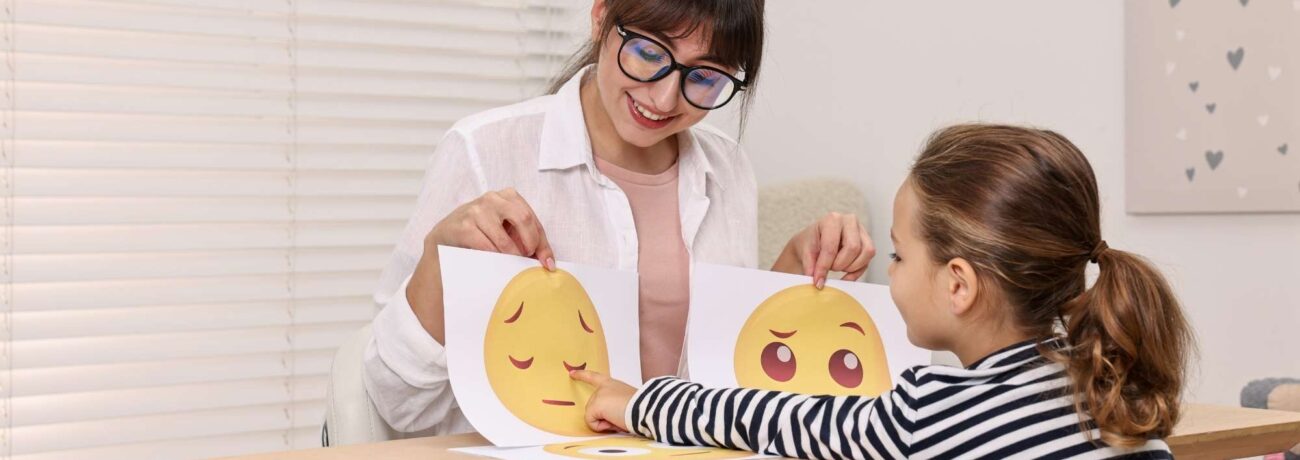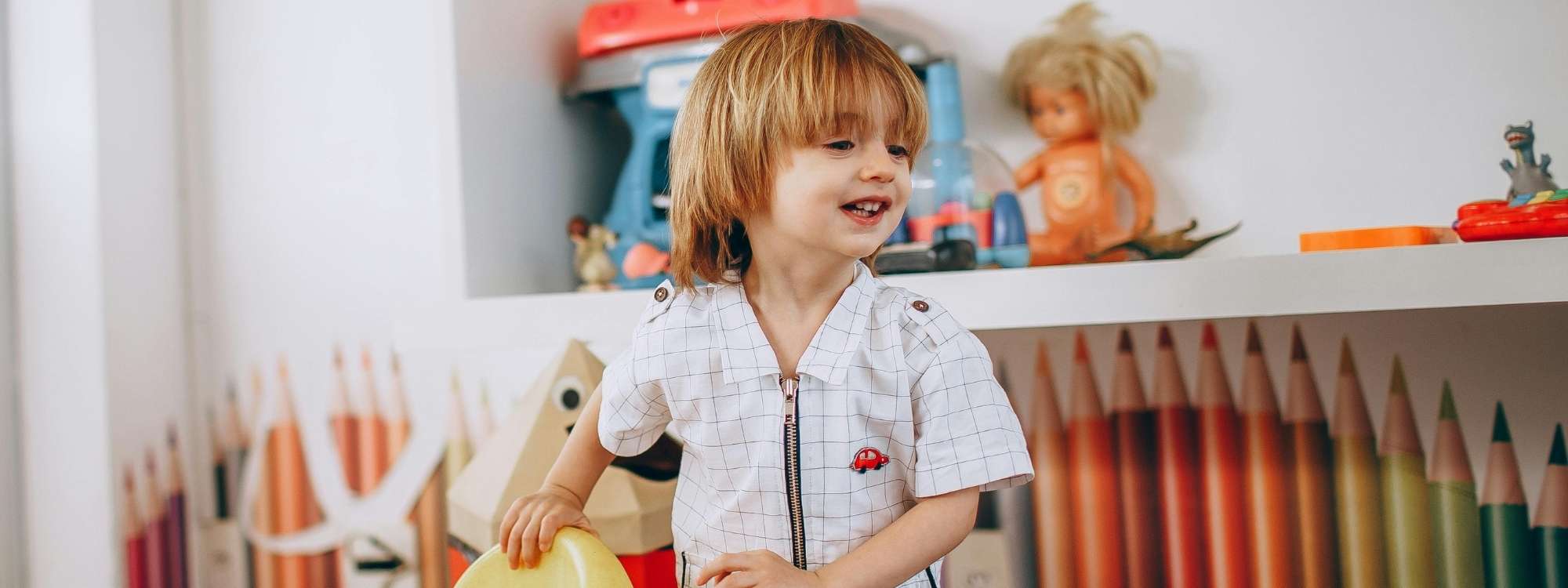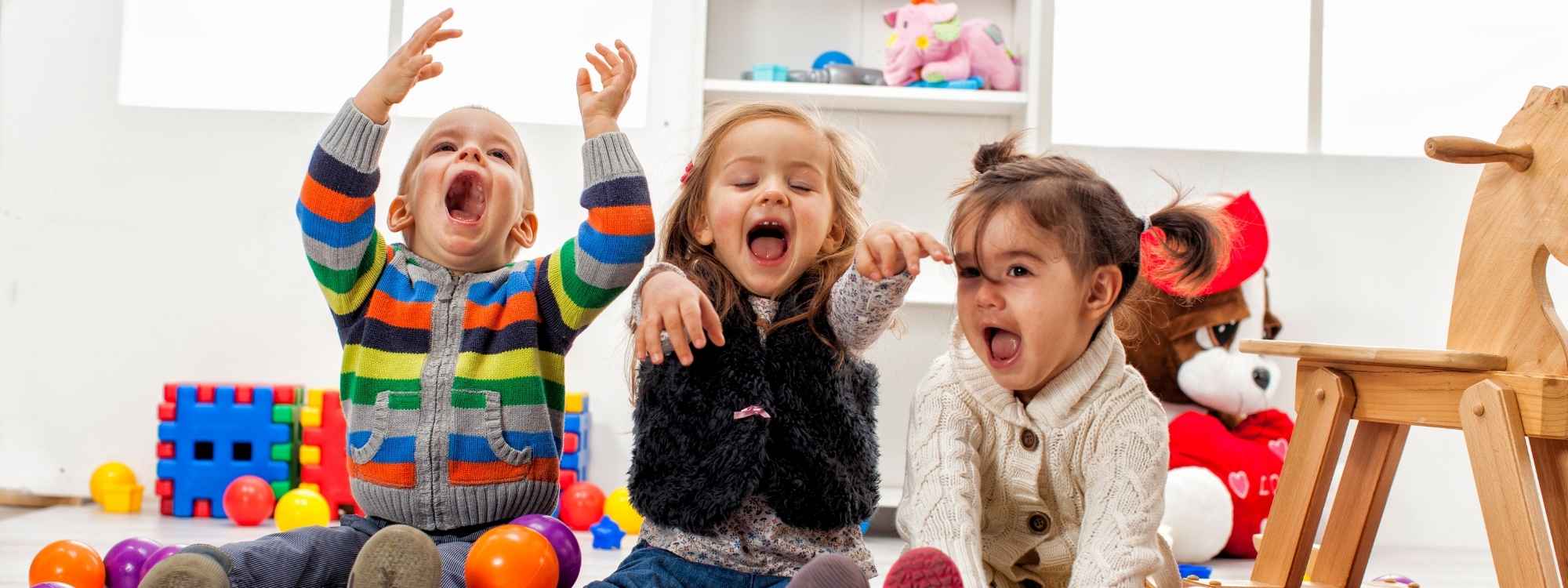Visual Support for Autism: Tools and Strategies for Families
For many families, an autism spectrum disorder (ASD) diagnosis (also referred to as autism spectrum disorders) brings both answers and new challenges. Parents often need practical strategies to help their child follow routines, manage transitions, and communicate effectively. One proven approach is visual support for autism, which uses pictures, symbols, or written words to make expectations clear, reduce anxiety, and build independence.
Families in Connecticut, Massachusetts, and Colorado often turn to Champions ABA for expert guidance in creating and applying these tools. Our team integrates visual supports into ABA therapy, parent training, and community-based programs, ensuring children gain meaningful progress at home, in school, and in everyday life. Visual supports can also help clarify relationships, routines, and interactions in a person’s life, making daily experiences more understandable and manageable.
What Are Visual Supports for Autism?
Visual supports for autism are structured tools that help children process language, follow routines, and reduce the stress that comes from unclear expectations. Unlike spoken words, which fade quickly, visual information remains present, allowing children more time to understand and respond. Visual supports enhance a child’s ability to participate in daily routines and communicate effectively with both peers and adults.
Examples of visual supports include photographs, line drawings, icons, objects, and written lists. These tools come in various forms, such as software, printed materials, and image collections. They can be as simple as a picture card that shows “brush teeth” or as detailed as a full daily schedule. These supports are especially valuable for children with disabilities who struggle with receptive or expressive communication and may have difficulty understanding and communicating. By clarifying what is happening now and what will come next, visual strategies empower children to participate more fully in home, school, and community activities. Visual supports help a child understand instructions and routines, improve learning, and support the expression of needs and ideas.
Types of Visual Supports and How They Work
There are many types of visual supports, and each serves a different purpose. Parents and professionals can choose the right tool based on the child’s needs, environment, and communication skills. Visual supports can include not only individual tools but also a collection of visual aids, such as downloadable resources or photo libraries, organized for easy access.
Here are some of the most common types:
| Visual Support Type | Purpose | Example Use | Tool Example |
|---|---|---|---|
| Visual Schedules | Provide step-by-step routines | Morning routine (wake up, brush teeth, get dressed) | Picture schedule cards |
| First–Then Boards | Motivate children with a work–reward system | “First homework, then play” | Two-panel board |
| Choice Boards | Encourage communication and independence | Choosing snacks, activities, or toys | Velcro choice board |
| Calendars/Mini-Schedules | Teach time and sequencing of events | Weekly school events or therapy sessions | Wall calendar with icons |
| Wait/Stop Symbols | Support patience and safety | Waiting in line, stopping unsafe behavior | Red “stop” card |
| People Locators | Show where caregivers or teachers are | “Mom at work, Dad at home” | Photo chart |
| Written Lists | Support literacy and comprehension using the written word | Checklist for packing a backpack | Printed checklist |
Physical tools can include print materials and printable resources, such as laminated cards, posters, or worksheets. In addition to pictures, objects, and text, sign language is another valuable form of visual support for communication, especially for children who benefit from multiple modes of input.
While many competitor resources list these tools, they often stop short of explaining how to decide which one to start with. Champions ABA bridges this gap by guiding parents through a decision-making process: for younger children, begin with first–then boards and simple schedules; as they develop, transition into choice boards and more complex calendars. Visual supports not only clarify expectations but also help children grasp the meaning of instructions and routines, supporting better understanding and participation.
How to Create and Use Visual Supports at Home
Parents can make visual supports with simple materials such as printed pictures, index cards, Velcro strips, or digital apps. The goal is not perfection but consistency and clarity.
To get started:
- Choose a target routine. Focus on one area that causes stress, such as getting ready for bed or preparing for school.
- Select images or icons. Use real photos of the child, clipart, or symbols that are easy to recognize.
- Arrange the visuals in sequence. Place them on a board or binder where the child can easily see them.
- Prompt your child to check the schedule. Use phrases like “check your schedule” to encourage independence.
- Fade prompts over time. Gradually reduce verbal reminders so the child learns to rely on the visual system.
Parents in Connecticut, Massachusetts, and Colorado can also access support directly. Our parent training programs include step-by-step instruction on how to design visuals that fit seamlessly into daily life.
Visual Supports in ABA Therapy and Parent Training
In ABA therapy, visual supports are not stand-alone tools; they are integrated into structured treatment plans as part of specialized instruction in education for children with autism and related disabilities. Board Certified Behavior Analysts (BCBAs) use visuals to teach communication, enhance social skills, support positive behavior, and promote independence. Research supports the use of visual supports as evidence-based practices in ABA therapy. For example, a first–then board may help a child complete a non-preferred activity by pairing it with a preferred reward. Visual schedules can reduce resistance to transitions by making the sequence of activities predictable and by aiding the presence of attention and focus.
Tools, Apps, and Printables Parents Can Use
Technology and printables make it easier than ever to implement visual supports. Families can choose from a wide range of tools, both digital and physical, to suit their child’s needs. Visual supports come in many forms, including software, image collections, print materials, and even sign language as an alternative communication tool.
Some helpful options include:
- Autism Speaks Toolkit: Offers a collection of printable schedules and first–then boards (registration required), making it easy to access and print visual supports.
- Communication Apps: Programs like Proloquo2Go provide digital icons for children who are nonverbal, and some apps also support sign language.
- Printable Templates: Picture cards, calendars, and token boards are available online. These resources often use the written word alongside images to aid comprehension. When searching for these materials, using relevant keywords can help families find the most effective visual supports.
Visual Supports for School and Community Integration
Visual supports are equally powerful in classrooms and community settings. Teachers often use daily schedules, classroom rules, and “finished” baskets to help students complete tasks and move on smoothly. For students with autism and other disabilities, visuals also support social interaction by clarifying expectations and reducing anxiety, facilitating communication with both peers and adults.
In the community, parents can use visuals for grocery shopping trips, camp activities, or family outings. For example, a visual map of the store can guide a child through each aisle, while a “calm corner” card can provide a safe break option during overstimulation. Visual supports have a significant impact on the lives of students with autism, helping them manage daily routines, increase independence, and participate more fully in everyday activities.
Challenges and Tips for Success
Although visual supports are effective, some families experience difficulty at first. Children may ignore visuals, parents may feel overwhelmed by preparation, or tools may not be updated as the child grows. There can be difficulty for both families and children when starting with visual supports.
To overcome these challenges:
- Keep visuals simple and consistent. Start with one or two supports and expand gradually to improve understanding and help children process information more effectively.
- Pair visuals with reinforcement. Praise and rewards encourage children to use the tools.
- Update and adapt visuals regularly. As your child develops, replace simple pictures with written words or more complex schedules. Over time, children learn to use visual supports more independently.
By staying flexible and patient, families can maximize the effectiveness of visual supports. Champions ABA provides ongoing coaching to help parents navigate these challenges successfully.
Practical Steps to Get Started with Visual Supports
Parents can take small, actionable steps to begin using visuals right away.
- Identify a daily routine that causes stress or resistance.
- Select the type of visual support that fits the situation best.
- Create a simple board or card with clear images or words.
- Introduce the support consistently and encourage your child to use it.
- Track progress and adjust as your child becomes more independent.
Conclusion
Visual supports are more than simple pictures; they are evidence-based strategies that help children with autism understand, communicate, and succeed in everyday life. By providing detailed information, reducing anxiety, clarifying expectations, and building independence, these tools create real progress.
At Champions ABA, we combine the expertise of ABA therapy, parent training, and diagnostic evaluations to design visual supports that are practical, individualized, and effective. Families in Connecticut, Massachusetts, and Colorado can rely on us for guidance, enhance their child’s comprehension, and receive hands-on support in homes, centers, and community settings. Contact Champions ABA today to schedule a diagnostic evaluation and start creating visual supports that help your child gain independence and confidence.
FAQs
What support is available for autism?
Families can access a range of support, including ABA therapy, parent training, visual supports, and community resources. Champions ABA provides services in Connecticut, Massachusetts, and Colorado, helping parents navigate each stage of their child’s development.
What is an example of a visual support in ABA?
A common example is a first–then board. This shows the child what task needs to be completed first, followed by a motivating activity. It helps reduce resistance and builds trust by pairing work with reward.
What type of visual support will be most effective?
Effectiveness depends on the child’s age, skills, and environment. Younger children may benefit from simple schedules or first–then boards, while older children may use calendars and written lists. Champions ABA guides families in choosing the right tool for each stage.
What are the benefits of visual supports?
Visual supports improve communication, reduce anxiety, and promote independence. They provide consistency across settings, making life easier for both children and caregivers. When combined with ABA therapy and parent training, visuals become powerful tools for long-term success.



